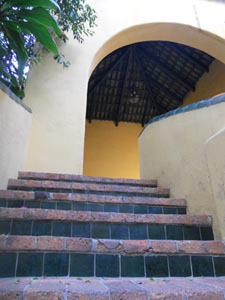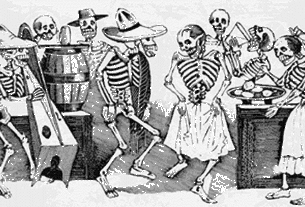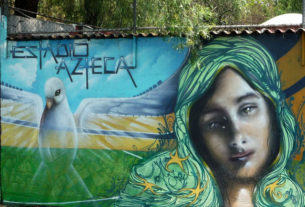When you rent or purchase Mexico real estate, you’ll find that construction techniques as well as climate are probably very different from what you are accustomed to. Will you struggle with mold in your Mexican home?
Perhaps.
While some molds like penicillin, huitlacoche and penicillium — which transforms sheep’s milk into roquefort cheese — can be good, black mold is toxic. Is black mold a potential problem in the Mexican house?
Black mold can have a green-black appearance, which gives it its name. Itbelongs to the genus Stachybotrys; Stachybotrys chartarum is also known as Stachybotrys atra. Because it can produce Volatile Organic Compounds (VOC) and mycotoxins that can be breathed in or ingested, it can cause allergic reactions, ill health and — in some cases — death for people with weakened immune systems.
There is scientific discussion about exposure occurs and the exposure rate of this mold. It can be problematic in enclosed spaces where no ventilation with outdoor air takes place, such as inside airplanes and winter homes.
Many molds can produce mycotoxins and VOCs, but let’s take a look at why and how molds are formed.
 Molds have been described as nature’s garbage disposal and are part of the process of decomposing or degradation of organic materials everywhere. In general, mold spores can travel through the air and land on a surface and, if food is available, these will start to grow under certain conditions. Literally, this is how penicillin was discovered as it landed on the culture plate of Sir Alexander Fleming.
Molds have been described as nature’s garbage disposal and are part of the process of decomposing or degradation of organic materials everywhere. In general, mold spores can travel through the air and land on a surface and, if food is available, these will start to grow under certain conditions. Literally, this is how penicillin was discovered as it landed on the culture plate of Sir Alexander Fleming.
Mold typically cannot grow in strong sunlight, since the sun’s ultraviolet rays will kill it. This is why we tend to find mold in dark areas. But it also needs moisture. If the conditions are too dry, the mold cannot grow. However, if there is a minimum of approximately 55% relative humidity in the environment, most molds will thrive. This is seen all along Mexico’s coastal areas.
At higher altitudes, especially to the East of the Sierra Madre Occidental, the climate is relatively cool and dry. Even so, molds can survive here in Mexico. How?
Small dark spaces unreached by sunlight that are moist can harbor molds. A leaky water pipe or drain, or even an overly zealous gardener watering the plants can contribute to this formation of moisture. Mold will take advantage of these special environmental conditions and flourish.
The interior of under-sink cabinets are a common place for mold to grow. Moisture, darkness and a lack of ventilation make this a paradise for molds. Here, potential sources of moisture are dripping faucets, leaking drains and even leakage around the base of the sinks and faucet sets. Various food sources for the mold can be the wood in the cabinet itself, cellulose in labels and common house dust — a variety of organic sources.
The mold may not be directly under the sink but under the wooden floor or base of the cabinet, behind the rear wall of the cabinet or in the adjacent cabinet units. This is primarily due to the humidity in these various areas is ideal for the mold to grow. If the relatively humidity in these areas decreases, the mold cannot grow and will not thrive.
Therefore the chain of items needed for mold to grow includes the availability of mold spores, darkness, food and humidity. If one of these is not present, the mold cannot grow. Because it is difficult to control the first three links in the chain, the key condition is humidity. If we can keep your home dry, mold should not become a problem.
But how do we control the humidity?
The obvious solution is to control the source of the water. Repairing leaks, limiting the wetting of walls and fixing roof leaks are examples of maintenance work that helps keep your home dry and prevent mold.
Sealing walls — both interior and exterior — will help reduce transmission of moisture through walls. Keeping furniture and cabinets away from the wall or floor surfaces, will limit the moisture trapped in the small space between them. For instance, if the lower cabinets do not have backing boards or boards along the bottom of the cabinet, moisture that could transmit through cannot be trapped in these small non-ventilated areas in, behind and below the cabinet. Of course, ventilation is important since this helps evaporate moisture and remove it. If we ventilate closed spaces, the relative humidity remains low.
If you perceive that musty smell associated with mildew or mold, it is likely nearby and hiding somewhere where the conditions are agreeable. Search for it, let it dry out and clean it up with bleach. If necessary, remove the material that is affected.
This will protect your Mexico real estate and can help safeguard your health as well.


